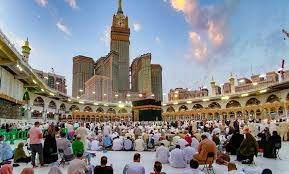Hajj and Umrah are the two spiritual journeys or pilgrimages that Muslims perform. In both pilgrimages, Muslims travel to the holy city of Makkah to perform rituals in the metaphorical house of Allah Almighty and other sacred regions nearby. But they are some significant differences between Umrah and Hajj.
Both pilgrimages are similar in renewing faith and enabling the pilgrims to yield great rewards and blessings. With these spiritual journeys, you can get the chance to be closer to Allah Almighty and learn more about your religion. Various affordable Umrah packages 2023 from UK enable you to experience the soul-lifting pilgrimage even if you don’t have enough money to perform the mandatory Hajj.
If you have become fortunate enough to perform Umrah, you must clearly understand the differences between Hajj and Umrah.
Significant Differences between Umrah and Hajj
Let’s discuss the significant differences between Umrah and Hajj;
-
Significance
Umrah and Hajj are significant for Muslims because of their exceptional blessings and forgiveness. But we cannot deny the difference of importance between them. The major difference between the two pilgrimages is their designated time.
Hajj is a mandatory pilgrimage, and all physically and financially capable Muslims must perform it. While Umrah is a voluntary pilgrimage that anyone can perform for spirituality, rewards, and blessings. In addition, many other differences make Hajj and Umrah different.
-
Timing
The time at which the Muslims can perform these pilgrimages. The Hajj has a designated time and can only be performed on the specified days of Dhul Hijjah, followed by Eid-ul-Adha. Dhul Hijjah is an Islamic month that is the last one in the lunar calendar, and Hajj must be performed between the 8th and 12th of this Islamic month.
While Umrah is a minor pilgrimage that Muslims can perform any time of the year, excluding the Hajj days. Therefore, considering your requirements and budget, you can choose when you want to perform Umrah.
-
Obligatory Rituals
There is a clear difference between the obligatory rituals of Hajj and Umrah. In the case of Umrah, first, you have to intend to perform Umrah and observe this sacred state. Then you must complete the Tawaf (seven rounds of the Holy Kaabah) and Sa’i (seven rounds between the hills of Safa and Marwah). At last, pilgrims must shave their heads to complete the voluntary pilgrimage.
The obligatory rituals of Hajj include assuming Ihram from Meeqat, standing on the Arafah until sunset, spending the night at Muzdalifah, passing the night at Mina, stoning the Jamarat, and shaving the head. At last, all the pilgrims have to perform the farewell circumambulation.
-
Pillars of Hajj and Umrah
Another significant difference between the two pilgrimages is their fundamental pillars. Four pillars of the minor pilgrimage are listed below;
- Ihram is the first pillar of Umrah. It is a sacred state that every pilgrim must enter before they travel to Haram to perform Umrah. There are specific rules and restrictions of Umrah.
- Tawaf is the second of Umrah. This involves encircling the Holy Kaabah in an anti-clockwise direction, starting from the sacred Black Stone and ending at the same place.
- Sa’i is the third pillar of Umrah. It consists of ritualistic rounds or walking between the sacred hills of Safa and Marwah. It works as a symbol for daily life struggles.
- Tahallul is the fourth pillar of Umrah. It involves shaving the head for male pilgrims, while female pilgrims have to clip a few inches of their hair. It marks the discontinuation of the sacred Ihram state.
Hajj also has four pillars, but they differ from Umrah rituals.
- Ihram is the first pillar of Hajj too. But in the case of Hajj, there are specific times for the pilgrims in which they have to observe the state of Ihram.
- The second pillar of Hajj is Sa’i which is rendered obligatory by the Holy Prophet (SAW).
- Wafqat is the third pillar of Hajj, in which pilgrims have to stand at any point in Arafat. Pilgrims have to observe this ritual during the dawn of the ninth of Dhul Hijjah.
- The last pillar of Hajj is Tawaf al-Ifaadah. This is the final Tawaf of Hajj, and you cannot skip this Tawaf.
-
Time Required to Perform the Rituals
The time required to perform Hajj and Umrah varies because they have different rituals. Umrah is a minor pilgrimage that you can perform within a few hours. This is not the case with Hajj. It will take at least five or six days to complete the obligatory pilgrimage.
The rituals of both Hajj and Umrah are different and need additional stamina and physical exertion. Therefore, the time required to perform both pilgrimages is also other.
Conclusion
Even though Hajj and Umrah are spiritual journeys with great benefits and rewards, they are different in their timing, rituals, and significance. If you are planning to embark on a spiritual journey and have contacted a trustworthy Islamic travel agency in the UK for Umrah and Hajj packages, it is important to understand the distinctions between Umrah and Hajj. So, make sure to take out time and study the differences in detail.


